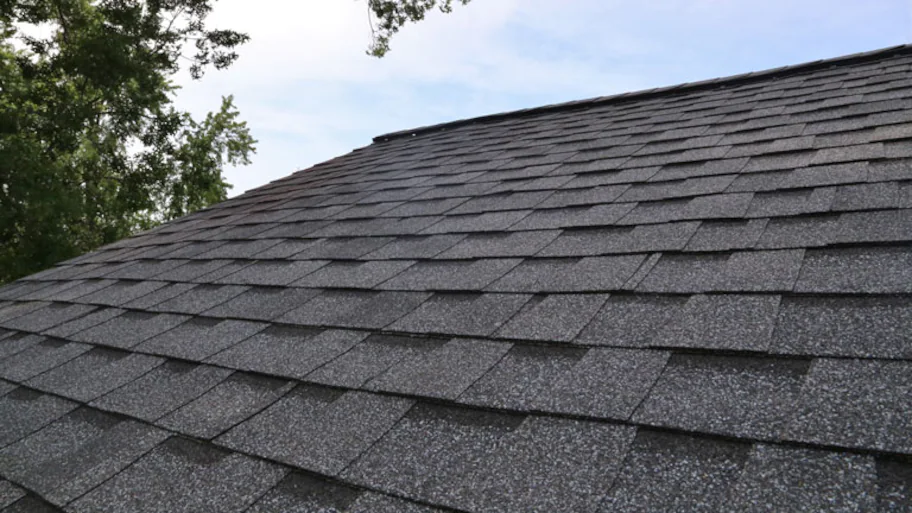Individual Testimonials on the most effective Gainesville FL Roofing Companies Offered
Individual Testimonials on the most effective Gainesville FL Roofing Companies Offered
Blog Article
Best Practices for Ensuring Appropriate Roofing Ventilation
Ensuring appropriate roofing ventilation is essential for the long life and effectiveness of a roof. A balanced intake and exhaust vent ratio, generally 1:300, plays an essential role, with intake vents ideally placed at the lower side of the roof for awesome air entrance and exhaust vents at the peak for warm air exit. Regular assessments to identify clogs and preserve clear air movement are critical. Maintaining insulation away from vents is important to avoid air movement restriction. Comprehending these fundamental elements sets the phase for even more detailed insights into setup and upkeep practices that can considerably boost your roof's efficiency.
Understand Air Flow Basics
Appropriately comprehending air flow basics is necessary for making sure the durability and performance of roof. Effective ventilation reduces dampness buildup and temperature level extremes in the attic, both of which can result in considerable architectural damage over time. A well-ventilated roof covering aids in protecting against typical concerns such as mold and mildew growth, timber rot, and ice dams, which can jeopardize the integrity of the roofing materials and the underlying frameworks.
The main goal of air flow is to promote the motion of air, permitting a regular exchange in between the exterior and interior environments. This balance is attained through a mix of consumption and exhaust vents that work together to maintain optimal air flow. Consumption vents, usually situated along the eaves or soffits, permit fresh air to go into the attic space, while exhaust vents, frequently positioned at or near the roof covering ridge, enable hot, damp air to run away.
Trick aspects affecting the efficiency of roof air flow consist of proper placement, sufficient sizing, and making sure that both intake and exhaust vents are unblocked. Normal assessment and maintenance are essential to determine prospective clogs, damages, or ineffectiveness in the air flow system, thus securing the roof's performance and toughness.
Kinds Of Roofing System Vents
Roofing vents play a crucial function in preserving effective attic room air flow and, by extension, the general health of the roof covering system. Various types of roofing vents are offered, each with distinct benefits tailored to specific roof covering requirements.

Soffit vents are installed under the eaves and operate in tandem with roof covering vents to make sure a well balanced intake and exhaust system. By allowing cooler air to go into from below, soffit vents promote the expulsion of warm air via top vents. Gable vents, situated on the exterior wall surfaces of the attic, deal another efficient option, particularly in homes with saddleback roofs.
Examine Your Existing Air Flow

Next, consider the age and condition of your roof products and ventilation components. Older systems might not conform with current building ordinance or may have worn away in time, minimizing their effectiveness. Conduct an extensive examination to recognize any kind of indications of damage, such as corrosion, damages, or spaces that could jeopardize the system's performance.
Furthermore, measure the attic temperature and humidity levels. High temperature levels and moisture can indicate poor ventilation.
Setup Best Practices
Reliable installment of roofing ventilation systems is extremely important for guaranteeing optimum performance and longevity. Correct installment starts with understanding the certain ventilation demands of the structure and the roofing system it covers. This includes determining the correct proportion of consumption to exhaust vents, usually sticking to the 1:300 regulation, which specifies one square foot of ventilation for every single 300 square feet of attic floor space.

Consumption vents ought to be mounted at the roof's lower edge, often in the soffits, pop over to this web-site to enable trendy air to get in. Exhaust vents, on the various other hand, ought to be installed near or at the roof covering's optimal to assist in the exit of warm, moist air.
Seal all air vent connections meticulously to stop air leaks and potential water seepage. Usage top quality products and comply with producer guidelines to guarantee toughness and effectiveness. Additionally, incorporating ridge vents with baffles can substantially boost air movement performance by stopping wind-driven rainfall and snow from going into the attic.
Ultimately, precise installment of roofing ventilation systems alleviates potential problems such as mold development, ice dams, and architectural damage, making sure the roofing system's honesty and the building's total health.
Regular Maintenance Tips
Consistency in upkeep practices is essential to making sure the lasting efficiency of roof ventilation systems. During these inspections, make sure that vents are complimentary of particles, nests, and various other obstructions that might restrain air flow.
Cleansing the vents is one more essential task. Make use of a soft brush or a vacuum cleaner to remove dirt and debris from intake and exhaust vents. Beware not to damage the vent screens or louvers during the process. In addition, inspect the attic space for any indications of water damages, which could compromise the honesty of the roof system.
Proper insulation is similarly important. Make certain that attic room insulation does not block the vents, as this can badly restrict air flow. If any type of insulation has actually changed or cleared up, rearrange or change it to maintain a reliable barrier.
Lastly, replace any type of harmed or missing out on components without delay. Busted vents, cracked tiles, or scrubby flashing can all add to inadequate ventilation and should be attended to immediately. Normal maintenance ensures that the roofing ventilation system functions ideally, thereby expanding the life expectancy of the roofing itself.
Final Thought
Ensuring correct roofing ventilation is paramount for preserving the official source efficiency and toughness of a roof covering system. Adherence to the 1:300 intake and exhaust vent proportion, combined with the critical positioning of vents, is important.
A well balanced consumption and exhaust air vent ratio, commonly 1:300, plays a crucial function, with intake vents preferably positioned at the reduced edge of the roofing for amazing air entry and exhaust vents at the optimal for cozy air leave. Intake vents, normally located along the soffits or eaves, enable fresh air to go into the attic area, while exhaust vents, frequently situated at or near the roof covering ridge, allow warm, damp air to leave.
Soffit vents are set up under the eaves and job in tandem with roof covering vents to make certain a balanced intake and exhaust system. By enabling cooler air to get in from below, soffit vents facilitate the expulsion of hot air with upper vents. Adherence to the 1:300 consumption and exhaust air vent proportion, paired with the calculated positioning of vents, is important.
Report this page